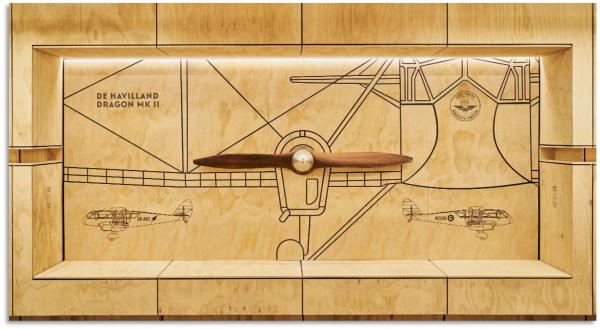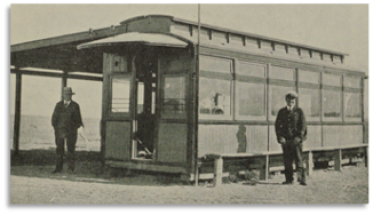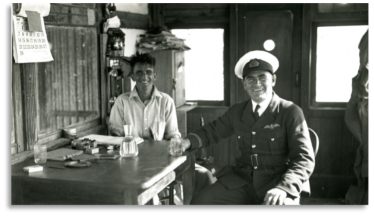Airport Features
New Airport features for 2024
 We've introduced two new exhibits at the terminal to celebrate our history and connection to this land. The first, a historical timeline on our mezzanine floor, created with the help of local historian Michael Fowler, tells our story beyond just a record of events. It highlights our modest start with a tram car terminal, Jean Batten's legendary visit, early flights connecting Hawke's Bay to Gisborne, the time our runway became a '70s drag racing strip, and the cost-saving full moon runway resurfacing. It's a tribute to our resilience, innovation, and the spirit of our community.
We've introduced two new exhibits at the terminal to celebrate our history and connection to this land. The first, a historical timeline on our mezzanine floor, created with the help of local historian Michael Fowler, tells our story beyond just a record of events. It highlights our modest start with a tram car terminal, Jean Batten's legendary visit, early flights connecting Hawke's Bay to Gisborne, the time our runway became a '70s drag racing strip, and the cost-saving full moon runway resurfacing. It's a tribute to our resilience, innovation, and the spirit of our community.
We also unveil a very special historical map depicting Te Whanganui a Orotū or the Ahuriri inner harbour, as it was prior to the 1931 earthquake. The quake lifted the seabed by 1.8 metres, transforming Te Whanganui a Orotū from a vast tidal lagoon into the flat land that would eventually host our Airport as it is today. This area was considered a crown jewel to the hapū of Ahuriri. The map invites visitors, locals, and mana whenua to connect with our shared heritage and the transformative journey of this land. Many thanks to the efforts from Mana Ahuriri in creating this very special piece.
Next time you are in the terminal check out the timeline and map. It's a great way to spend some time while having a coffee waiting for your flight.
The Propeller
A fortunate relic from a bygone age, this propeller takes pride of place within the terminal because it is from one of the two De Havilland aircraft that flew the first commercial flights between Hawke’s Bay and Gisborne from 1935.
Commercial flights stopped when World War II started, and the two De Havillands were seconded to Fiji for the war effort. By the war’s end, only one aircraft remained and this fabric-clad plane was set alight, which was common practice at the time. Fortunately, a sentimental serviceman rescued one of the propellers before being consumed by the flames and brought it back to Hawke’s Bay on a returning service flight.
The story goes that the serviceman’s father pedaled to the airport, wrapped the propeller in a blanket, and cycled it home as a wartime souvenir. For many years the propeller was stored at the Hawke’s Bay Aero Club before it was offered to Hawke’s Bay Airport on a permanent loan for the terminal redevelopment.

The Tram Car Terminal

“Flying in the box like dragon was not unlike being in a tram car”
This quote is displayed in the terminal as a nod to the experience of flying within a De Havilland Dragon Mk II in the 1930s. In an amusing coincidence, an old tram car was being used as the passenger terminal and office at the time which can be seen in the background of the poster on the wall and more clearly in the images below.

Skysyx - The Cat On The Wall

Skezyx the cat was well documented as the mascot of East Coast Airways*. He was an inquisitive little guy who clearly loved to fly. He would go up on the occasional test flight in the bumpy De Havilland Dragon aircraft and at least once, he managed to get onto a passenger flight, amusing the customers on board.
*East Coast Airways Limited operated the first commercial services between Hawke’s Bay and Gisborne commencing on the 15th of April, 1935. This was the first multi-engine scheduled air service in New Zealand.
